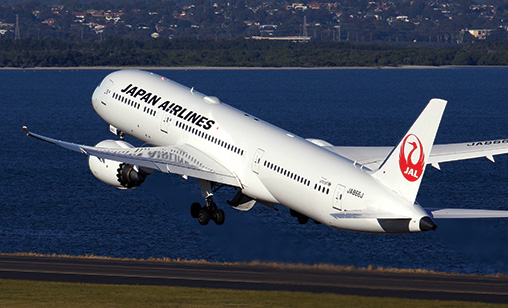News Backgrounder
Japan Airlines plots catch up with 23% capacity surge
July 1st 2017
After exiting bankruptcy protection after seven years on April 1, Japan Airlines (JAL) is back on an expansion trajectory that includes a 23% international capacity expansion by 2021 and the goal of taking back market share lost to rival All Nippon Airways (ANA). Read More »
The airline’s growth ambitions are heavily dependent on Japanese government plans to increase slots at Tokyo’s Narita and Haneda airports. JAL chairman and director, Masaru Onishi, said last month that the government would release more information on its dual airport strategy in 2018, but a decision on slot allocation was unlikely before fiscal 2019. JAL was “strongly hopeful” its slot requests would be met, he said.
 |
After Tokyo was granted the 2020 Summer Olympics, the Japanese government launched studies aimed at improving slot capacity at Narita and Haneda as well as building a new railway line to link Haneda and Tokyo Station in 18 minutes.
Haneda suffers from airspace restrictions because of a military base to its west and Narita to the east. Taxiways are being built to accommodate more flights, with completion scheduled for next year.
JAL’s expansion drive began in May when the 66-year-old carrier announced new nonstop services between Tokyo Narita and Melbourne from September 1 and Narita-Kona from September 15. Melbourne will become JAL’s second Australian destination after Sydney.
Returning to Kona was a JAL priority. Hawaii remains a favourite Japanese getaway so the Kona route will be served daily with a B767-300ER refurbished with the JAL SKY SUITE.
The oneworld member operates six daily flights to Honolulu, four from Narita and one daily flight each from Osaka and Nagoya. New competitor, budget carrier AirAsia X launched fifth freedom flights between Osaka and Honolulu in June and ANA has announced A380 flights to Hawaii from 2019.
JAL’s recent “Challenge, Leading to Growth” plan highlighted the importance of the U.S. to the carrier. It flies to Boston, Chicago, Dallas, Los Angeles, New York, San Diego and San Francisco. Routes to Las Vegas, Seattle and Miami are on JAL’s radar. It operates all its trans-Pacific flights in a joint venture with American Airlines.
Onishi said JAL had held talks with Cathay Pacific Airways about closer cooperation on trans-Pacific routes, which would provide access to Honolulu, San Diego and Dallas for Cathay, but Hong Kong and the U.S. do not have an ‘Open Skies’ agreement.
In May, JAL executives and Miami airport executives discussed the case for launching nonstop flights between Tokyo and Florida. More than 415,000 passengers travel between Asia and Miami annually via connecting flights. Miami is the busiest U.S. airport for leisure and business travel to Asia without a nonstop service.
JAL has B787-8s, B787-9s and B777-300ERs in its fleet and will receive 31 A350 XWBs from 2019. All these aircraft have the range to fly to Miami, a gateway to Latin and South America and a major hub for American, JAL’s oneworld and joint venture partner.
In Europe, JAL has Paris, Moscow, London, Helsinki and Frankfurt in its network and the airline is considering the resumption of flights to Amsterdam, Madrid, Milan and Rome as well as Osaka to Paris and London. It has a joint venture with oneworld partners British Airways, Iberia and Finnair from Japan to Europe, but it is smaller than the partnership between All Nippon Airways and Lufthansa.
At June 30, JAL had 160 aircraft, all widebodies with the exception of 50 B737-800s. The carrier operates 38 B767-300ERs, some of which are relatively recent fleet additions and are furnished with the airline’s latest cabin interiors. These will be retained to 2019-2020. The older B767s will be used on domestic routes until they are replaced with B787-9s.
Following its bankruptcy filing in January 2010, JAL received ¥350 billion (US$3.1 billion) from a government-backed corporate rehabilitation body as well as tax breaks. The carrier engineered a turnaround and its shares were re-listed on the Tokyo Stock Exchange in September 2012. The airline has since produced strong results, including multi-million consecutive net profits.
But unlike ANA, JAL’s most recent fiscal year profit, to March 31, declined. It reported a 5.9% year-on-year fall in net profit to ¥164.1 billion, which it blamed on reduced fuel surcharge income and currency fluctuations.